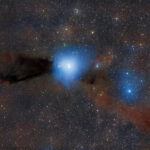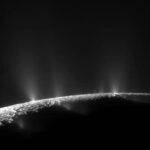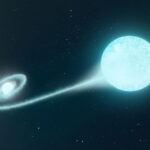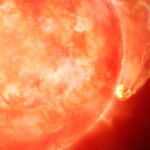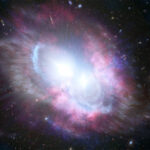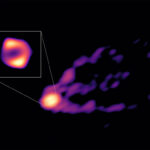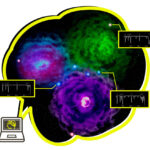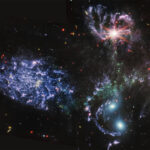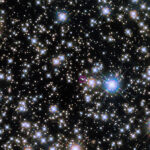When Baby Stars and Dark Clouds Collide
Did you know the clash of matter and energy can create magical fireworks in the sky? On Earth, one can see this as glowing auroras or powerful lightning strikes beaming across the sky. What happens when such clashes take place in space? The two young, low-mass proto-stars HR 5999 and HR 6000…
NASA Cassini Data Reveals Building Block for Life in Enceladus’ Ocean
Using data collected by NASA’s Cassini mission, an international team of scientists has discovered phosphorus – an essential chemical element for life – locked inside salt-rich ice grains ejected into space from Enceladus. The icy crust at the south pole of Enceladus exhibits large fissures that allow water from the…
Tune in to the Supernova Radio!
For the first time ever, astronomers detected radio waves coming from a Type Ia supernova! And it doesn’t end there: this ‘special radio broadcast’ might carry clues to solve a longtime puzzle - how white dwarfs really explode! Artist’s impression of helium-rich material from a companion star accreting onto a white dwarf.…
Watch out, Earth! A Dying Star Just Ate A Planet
For the first time astronomers found direct clues of a dying sun-like star eating an exoplanet. Using the NSF NOIRLab’s Gemini South Telescope in Chile, researchers observed a long burst coming from the star, low in energy – a telltale sign of a planet swimming along near the star's surface. Artist Impression…
Fast and Furious starring Dual Quasars
Astronomers describe 'cosmic noon' as a dramatic period in the history of our Universe when it was buzzing with galaxy mergers and furious star formation. Observing these mergers has been relatively rare and challenging since the Universe was very young - only three billion years old! Astronomers found evidence of…
First direct image of a black hole expelling a powerful jet
For the first time, astronomers have observed, in the same image, the shadow of the black hole at the centre of the galaxy Messier 87 (M87) and the powerful jet expelled from it. The observations were done in 2018 with telescopes from the Global Millimetre VLBI Array (GMVA), the Atacama…
AI’s Hunt for the First Stars
Once upon a time, dinosaurs roamed our planet Earth - and even though we never met one, the fossils tell us their story. With the help of artificial intelligence (AI), an international team of astronomers have found the “fossils” of the very first stars in the Universe! They discovered that…
New map of the universe’s cosmic growth supports Einstein’s theory of gravity
For millennia, humans have been fascinated by the mysteries of the cosmos. Unlike ancient philosophers imagining the universe’s origins, modern cosmologists use quantitative tools to gain insights into its evolution and structure. Modern cosmology dates back to the early 20th century, with the development of Albert Einstein’s theory of general…
Playing Connect-the-dots Around a Baby Star
Have you ever played connect-the-dots in a magazine? At first, it looks like a mess - but after you figure out how to connect the points, a pattern appears out of the chaos. Recently, astronomers noticed a mysterious spiral pattern hiding around a baby star. But instead of ‘dots’, the…
NASA Missions Study What May Be a 1-In-10,000-Year Gamma-ray Burst
On Sunday, Oct. 9, 2022, a pulse of intense radiation swept through the solar system so exceptional that astronomers quickly dubbed it the BOAT – the brightest of all time. The source was a gamma-ray burst (GRB), the most powerful class of explosions in the universe. The Hubble Space Telescope’s…

